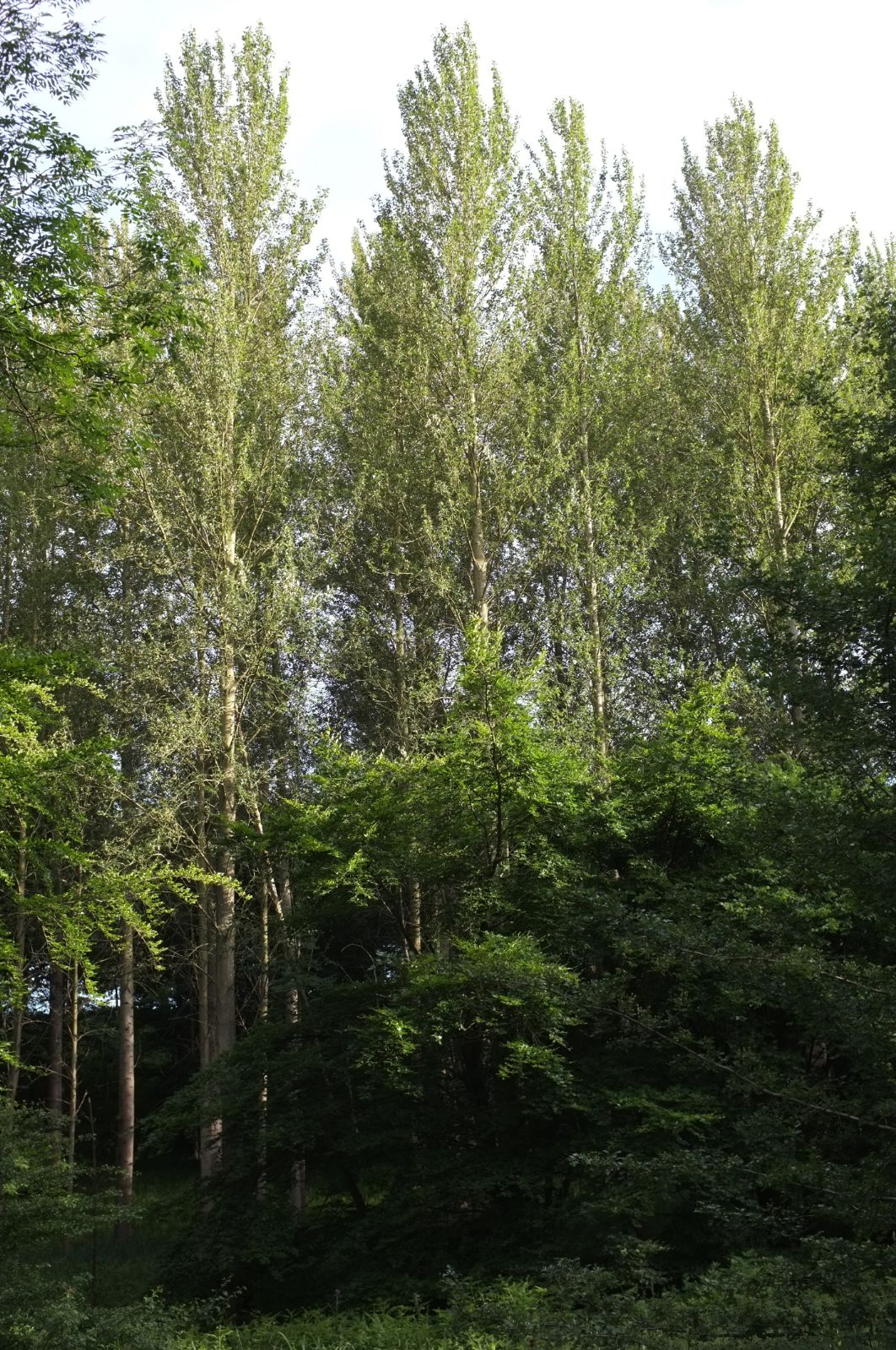Populus balsamifera
Credits
Article from Bean's Trees and Shrubs Hardy in the British Isles
Recommended citation
'Populus balsamifera' from the website Trees and Shrubs Online (treesandshrubsonline.
Infraspecifics
Other taxa in genus
- Populus acuminata
- Populus adenopoda
- Populus alba
- Populus angulata
- Populus angustifolia
- Populus × berolinensis
- Populus × canadensis
- Populus candicans
- Populus canescens
- Populus ciliata
- Populus deltoides
- Populus fremontii
- Populus × generosa
- Populus glauca
- Populus grandidentata
- Populus heterophylla
- Populus koreana
- Populus lasiocarpa
- Populus laurifolia
- Populus maximowiczii
- Populus nigra
- Populus purdomii
- Populus sargentii
- Populus simonii
- Populus szechuanica
- Populus tremula
- Populus tremuloides
- Populus trichocarpa
- Populus tristis
- Populus wilsonii
- Populus yunnanensis
A tree 100 ft high in the wild, but rarely more than half as high in this country, producing suckers freely; young shoots smooth, round; winter-buds thickly covered with a balsamic, very fragrant, viscid, yellowish resin, often 1 in. long, long-pointed. Leaves broadly ovate, rounded or slightly heart-shaped at the base, slender-pointed, very variable in size, round-toothed, ordinarily 2 to 5 in. long, 11⁄4 to 3 in. wide, dark shining green above, glabrous or slightly downy beneath, the pale or whitish ground conspicuously net-veined; stalk 2⁄3 to 2 in. long. Male catkins 3 in. long; female ones 4 or 5 in. long.
Native of N. America, where it is widely spread and abundant in the northern latitudes. It was introduced some time in the 17th century.
The balsam poplar was at one time represented in cultivation by a male clone, propagated by the suckers which it produced in great abundance. On vigorous suckers the leaves were occasionally of enormous size – up to 13 in. long and 10 in. wide. But this poplar was probably never very common; most of the plants grown under the name P. balsamifera were in fact P. candicans. The true P. balsamifera is a poor grower in this country – that is true both of the old clone and of subsequent importations. The great charm of P. balsamifera is the balsamic odour of the unfolding leaves in spring which fills the air around. But P. trichocarpa, its western ally, is just as fragrant and a more satisfactory tree in this country.
From the Supplement (Vol. V)
As noted on page 302, the Balsam poplar is very much less satisfactory in Britain than its western ally P. trichocarpa. The largest extant tree grows at Colesbourne, Gloucestershire, and measures 135 × 101⁄4 ft (1984). In the Forest Research Station at Alice Holt, Hampshire, it is 80 × 33⁄4 ft and there is a bushy tree, planted 1954, of 50 × 33⁄4 ft (1985).
P. balsamifera × P. trichocarpa – Some examples of ‘Tacatricho 32’ (page 303) are: Forest Research Station, Alice Holt, Hants, pl. 1960, 92 × 4 ft and, pl. 1953, 70 × 41⁄2 ft (1985); Green Park, London, 95 × 41⁄4 ft and 95 × 33⁄4 ft (1982); Bodnant, Gwyn., 82 × 4 ft (1981); Edinburgh Botanic Garden, pl. 1962, 66 × 33⁄4 ft (1981).
There is also ‘Tacatricho 37’, with the following examples: Alice Holt, Hants, pl. 1953, 85 × 63⁄4 ft at 3 ft (1985); Eastnor Castle, Heref., 92 × 41⁄2 ft and 95 × 5 ft (1984); Edinburgh Botanic Garden, pl. 1962, 74 × 31⁄2 ft (1981).
P. balsamifera × P. trichocarpa
This cross between the eastern and western American balsam poplars occurs spontaneously in the wild, but the cultivated trees are mostly the result of deliberate hybridisation. The best known of these is ‘Tacatricho 32’ (‘TT 32’). It is a fast-growing female tree of remarkably narrow habit, much used in plantation for timber production, and also for shelter and screening. See further on p. 295.
P × jackii Sarg.
Synonyms
P. baileyana Henry
var. michauxii (Dode) Henry
Synonyms
P. michauxii Dode
P. balsamifera var. subcordata Hylander

